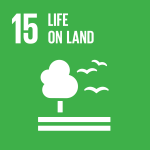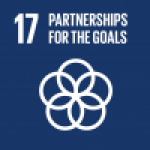
Implementation was the name of the game as delegates and practitioners came together the first week of September for Climate Week 2 (CW2) in Addis Ababa, Ethiopia. Organized under the auspices of the United Nations Framework Convention on Climate Change (UNFCCC), CW2 provided a welcoming space for open, solutions-oriented dialogue aimed at identifying barriers, co-designing enabling conditions, and turning commitments into measurable outcomes. At the heart of the get-together was the two-day “Implementation Forum”, including a dedicated Implementation Lab (I-Lab) for agriculture and forestry.
Continuous multi-stakeholder collaboration
Representing the joint FAO-UNDP SCALA programme – which has acquired unique insights from over 20 countries on how to turn agrifood measures in national climate plans into local success stories – FAO Senior Climate Change Implementation Specialist Sibyl Nelson underlined to I-Lab attendees the importance of collaboration within and across ministries, as well as with a broad range of stakeholders at national, regional and district levels.
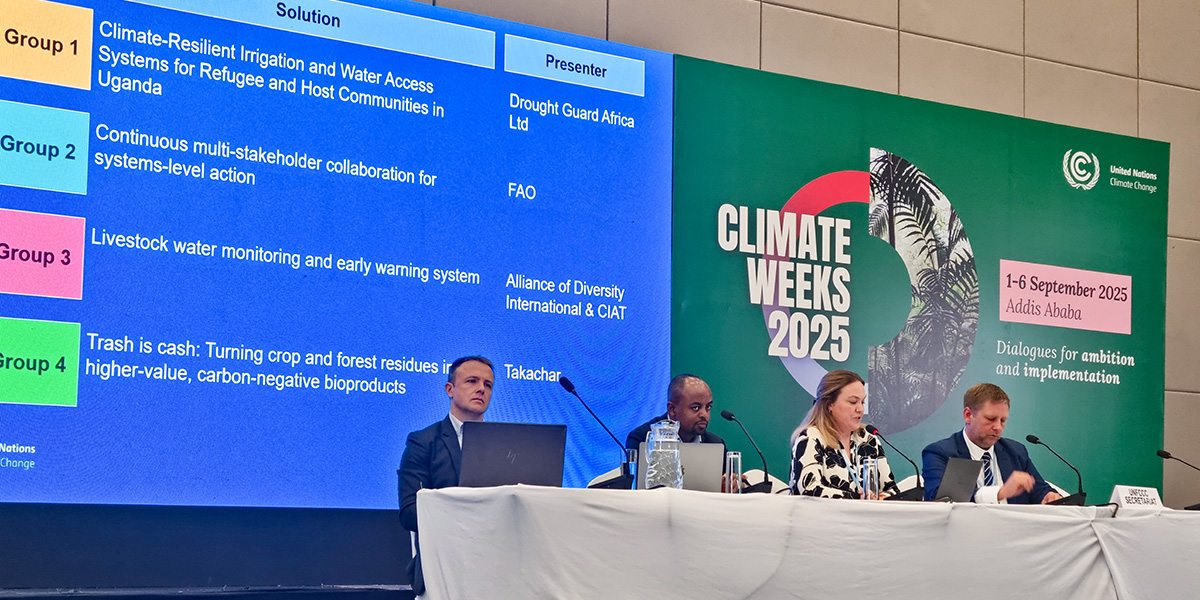
“Continuous multi-stakeholder collaboration for systems-level action is a process through which the climate commitments governments have made at the international level – for instance, on nationally determined contributions (NDCs) and national adaptation plans (NAPs) – can be translated into transformative local actions… In SCALA, we like to stress the word “continuous” as a reminder that this is not a one-time event, but something that is ongoing.”
As an example, Ms Nelson highlighted SCALA’s participatory approach in Colombia, where the programme has helped marry the expertise of international organizations and government ministries with that of local farmers, women, youth, Indigenous Peoples, and Afro-descendant communities. “Through a co-creation approach, we’ve been able to design solutions to address specific adaptation challenges: supporting 32 risk and vulnerability assessments conducted at departmental level for 16 agricultural priority value chains; collecting 15 Indigenous and traditional practices that support context-based adaptation; fostering ongoing knowledge exchanges between rural communities; and piloting a certification scheme for products coming from agriculture adapted to climate change.”
Another success story cited by Ms Nelson was Ethiopia, where a FAO, UNDP and government team conducted a participatory review of national climate policies to see where they could collaborate. They agreed to support adaptation actions in three micro-watersheds – in Oromia, Harari and Amhara Regions – each representing different ecosystems. They first engaged with local stakeholders, then the Regional Bureau of Agriculture and selected woreda offices, and finally with international organizations such as the International Center for Tropical Agriculture (CIAT). By including a diverse range of stakeholders, they were able to close information gaps between local and federal level, which led to strengthening local governance and private sector engagement in localized action. This inclusive approach could ultimately be scaled up to include other watersheds.
NAP Expo
CW2 came hot on the heels of the annual NAP Expo event – organized by the Least Developed Countries Expert Group together with the Zambian government under the UNFCCC – this year held in Lusaka. Implementation and adaptation finance were again to the fore, as the FAO and UNDP SCALA teams hosted a session on “Nature-based solutions (NbS) for NAP implementation in agrifood systems” on 15 August. FAO Forestry Officer Maria Nuutinen, who moderated the session, stressed that mainstreaming biodiversity into NAPs would enhance biodiversity action, adaptive capacities of communities, agrifood systems and ecosystems, while strengthening climate resilience and ecosystem integrity. Ms Nuutinen stated that “integrating NbS and ecosystem-based adaptation (EbA) into NAPs and National Biodiversity Strategies and Action Plans (NBSAPs) delivers major co-benefits and synergies, avoids duplication, and improves resource efficiency”. Some important elements that the session participants underlined during the group work included: achieving integration through policy and fiscal incentives; enhancing monitoring, evaluation and learning (MEL) systems for adaptation; and improving access to diversified financing mechanisms, including those for biodiversity.
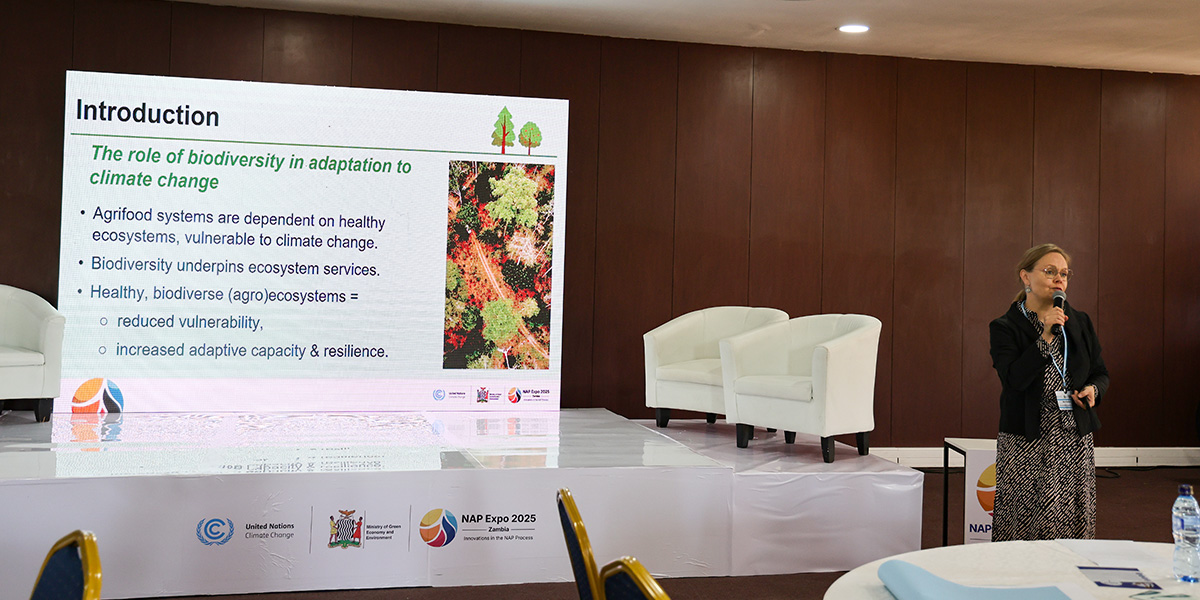
The NbS session featured expert presenters: Addisu Negash Melkie, Ministry of Agriculture, Ethiopia; Juliette Jaekel, International Climate Initiative (IKI), Germany; Adriana Valenzuela Jimenez, Global Center on Adaptation; Vincent Ziba, FAO Zambia; and Liam Fee, UNDP.
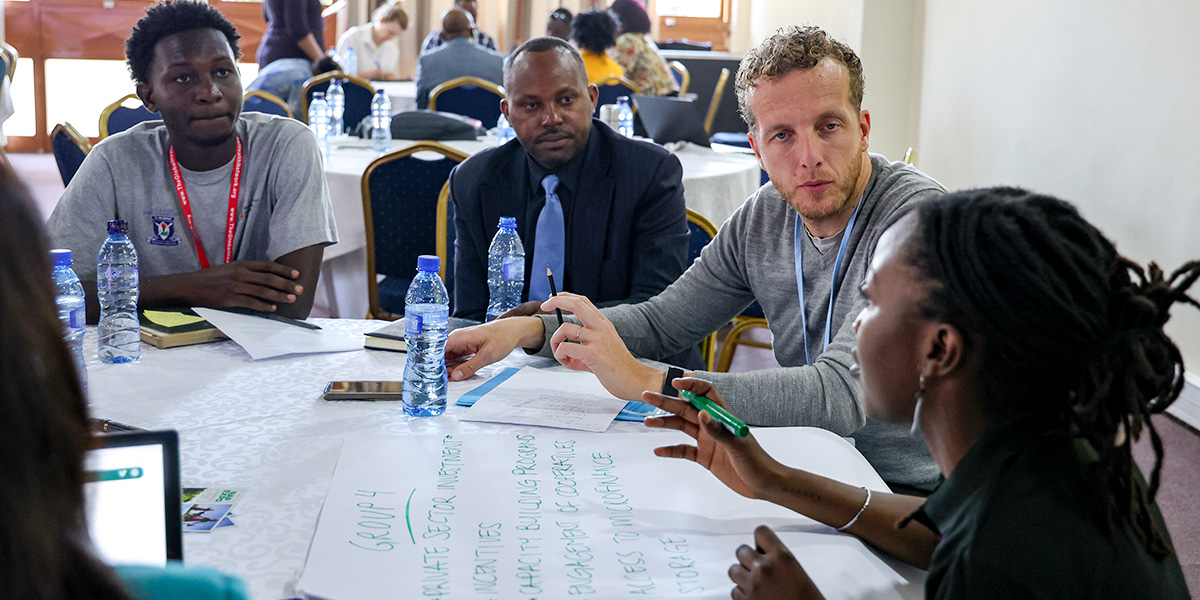
Among the many interesting ideas that emerged from their presentations and the group work included:
Taking advantage of the newly updated NAP technical guidelines and their supplements, as well as NBSAP support materials to embed biodiversity aspects in climate risk and vulnerability assessments, communication strategies and other implementation efforts, and MEL and reporting efforts.
Tackling the challenges caused by limited coordination between biodiversity and climate institutions at national level by engaging all key stakeholder groups early on. Speakers emphasized cross-sectoral coordination as crucial for integrating NbS considerations into NAPs, as ecosystems span across administrative boundaries.
Doing a realistic costing of and securing long-term resource flow for NbS within NAPs through demonstrating cost-effectiveness compared to grey infrastructure, and showing multiple benefits (such as adaptation, water, biodiversity, livelihoods, carbon, slope stabilization, and more).
Developing cross-sectoral planning and implementation mechanisms, and setting clear biodiversity and adaptation targets and indicators, that can take advantage of the global goal on adaptation process.
Engaging in iterative, long-term NAP processes and investing in efficient implementation, recognizing that adaptation is not a one-off project but rather requires continuous MEL and adjustments based on new data, experiences, and changing climate realities.
Summing up the session, Liam Fee, UNDP Adaptation Planning Specialist, said: “Agriculture and food systems are at the heart of building resilience to climate change. This event highlighted the strong partnership between UNDP and FAO through the SCALA programme to transform this critical sector. It also showed the continued interest from countries and partners in advancing nature-based solutions and ecosystem-based adaptation for climate action.”
Africa Climate Summit
The SCALA team wrapped up a busy few weeks at the Second Africa Climate Summit – which took place 8–10 September, also in Addis Ababa – where the focus this time was on financing for Africa’s resilient and green and development. SCALA contributed to a side event on "Adaptation in a Harsh World: How Can Communities Cope with Climate Shocks," at the UNDP Pavilion. A summary of the main takeaways from the summit is available on the UNDP website.
Relevant links
Videos


